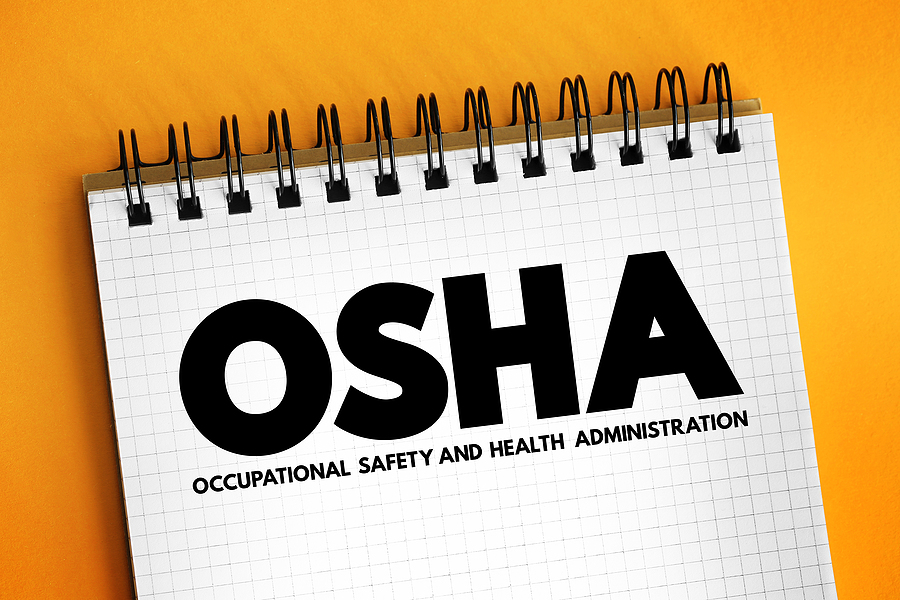OSHA 10-Hour Class Basics Spelled Out

Ever found yourself in a job hunt, browsing through opportunities, and coming across a peculiar phrase, “Must possess an up-to-date OSHA 10 Certification?” Or perhaps you’ve seen it referred to as a “DOL card,” a nod to the plastic wallet cards issued by the Department of Labor, acting as a testament to your training.
So, what’s OSHA 10 all about? How long does it stay “up to date”?
What is OSHA 10 Certification?
Those involved in construction, manufacturing, among others, often use “OSHA Certified” or “OSHA Certification.” It means you’ve been through OSHA Outreach training and secured a “certificate of completion.”
Just to clear the air, there’s a slight linguistic misunderstanding I’d like to correct. Even though many use the terms “OSHA Certified” or “OSHA Certification,” OSHA has expressly stated that these terms aren’t quite right. In fact, they’ve underscored that Outreach courses are not to be considered certification. A bit nitpicky? Maybe. But it’s crucial we stick to their rules to keep things above board.
Regardless of this technicality, the public still leans towards “OSHA Certification” to refer to OSHA 10, and honestly, that’s okay. But, in the spirit of playing it safe, I thought I should clarify. Better to err on the side of caution, right?
What is OSHA 10?
In a nutshell, OSHA 10 is a 10-hour safety course, concocted by OSHA, targeting workers in risk-prone industries. Its essence is to enlighten workers about the typical safety and health threats they might encounter on the job. Plus, it underscores their entitlement to a safe and wholesome work environment.
OSHA 10 forms part of what is referred to as the Outreach Training Program by OSHA. It’s one of two levels of Outreach courses, the other being OSHA 30, which is catered towards workers with supervisory roles.
Wondering which OSHA 10 Certification is your perfect match?
OSHA’s Outreach courses are neatly segmented into categories based on the type of work or “industry.” It’s crucial that you zero in on the right one. OSHA structured their Outreach Training Program to be uniform yet adaptable. Trainers are mandated to cover specific topics, with a leeway to select others.
There are a few different categories of OSHA 10 certification:
- OSHA 10 Construction
- OSHA 10 General Industry, encompassing all other related work types
- OSHA 10 Maritime, which branches out into Marine Terminal, Shipyard, and Longshoring
General Industry could be a bit of a maze when trying to identify the apt curriculum. It’s so because it can be customized for a broad range of jobs. Most of it concentrates on manufacturing and diverse industrial tasks, but you can stumble upon courses aimed at other professions, like healthcare workers.
If you’re after an OSHA 10 course, particularly in General Industry, make sure to scrutinize the topics on the menu. Your OSHA 10 certification will be truly worthwhile if it zeroes in on safety matters that hit close to home.
Is OSHA 10 Required?
Well, that depends on a few factors. From OSHA’s perspective, their Outreach Training is purely optional. Outreach courses on their own don’t meet an employer’s safety and health training requirements, though practically, they do provide a beneficial starting point.
However, some jurisdictions and employers might insist on a DOL card. This very necessity gave birth to the Outreach Program, as policy makers yearned for an easily identifiable benchmark for safety training that could be set as a minimum requisite.
In the realm of state or local regulations, OSHA 10 requirements are primarily tied to the construction industry. An interesting outlier is Nevada, where all entertainment industry workers must obtain an OSHA 10 General Industry card.
Despite a DOL card not being legally enforced, your employer might mandate it for hiring, or might lean towards OSHA-certified applicants when hiring.
Why and Where is OSHA 10 Required for Construction?
Legal mandates for OSHA 10 in Construction are justified, given the inherent risks of the construction and demolition industry, one of the most hazardous in the U.S.
Though the construction industry employs only 5-7% of the U.S. workforce, it is responsible for a staggering 20% of worker deaths – more than 1000 each year. The rates of injury and illness significantly outweigh the workforce average – and this is despite a quarter of construction workers confessing to not reporting work-related injuries.
There are few jurisdictions, like Nevada and Philadelphia that outright require OSHA 10 for all construction workers. Usually, the certification requirements are intertwined with public works funding – contractors are obliged to present evidence that all their workers have completed OSHA 10.
Does OSHA 10 Expire?
OSHA does not mention a “use by” date on DOL cards. In their book, there’s no such thing as OSHA 10 expiration.
Those who necessitate an OSHA 10 card – state and local governments or employers, for instance – usually also determine how frequently the training needs refreshing.
How Long OSHA 10 Lasts When Needed?
The answer varies based on local legislation or the employer’s discretion, but a time frame of three to five years is typical. For instance, in places like Connecticut, Miami, and Philadelphia, OSHA 10 needs renewing every 5 years.
Where Do You Get OSHA 10?
Unfortunately, OSHA doesn’t directly provide training to job hunters. Instead, they authorize third parties to do the job. You can find OSHA-authorized training in both conventional classroom setups and in the digital realm, online.
